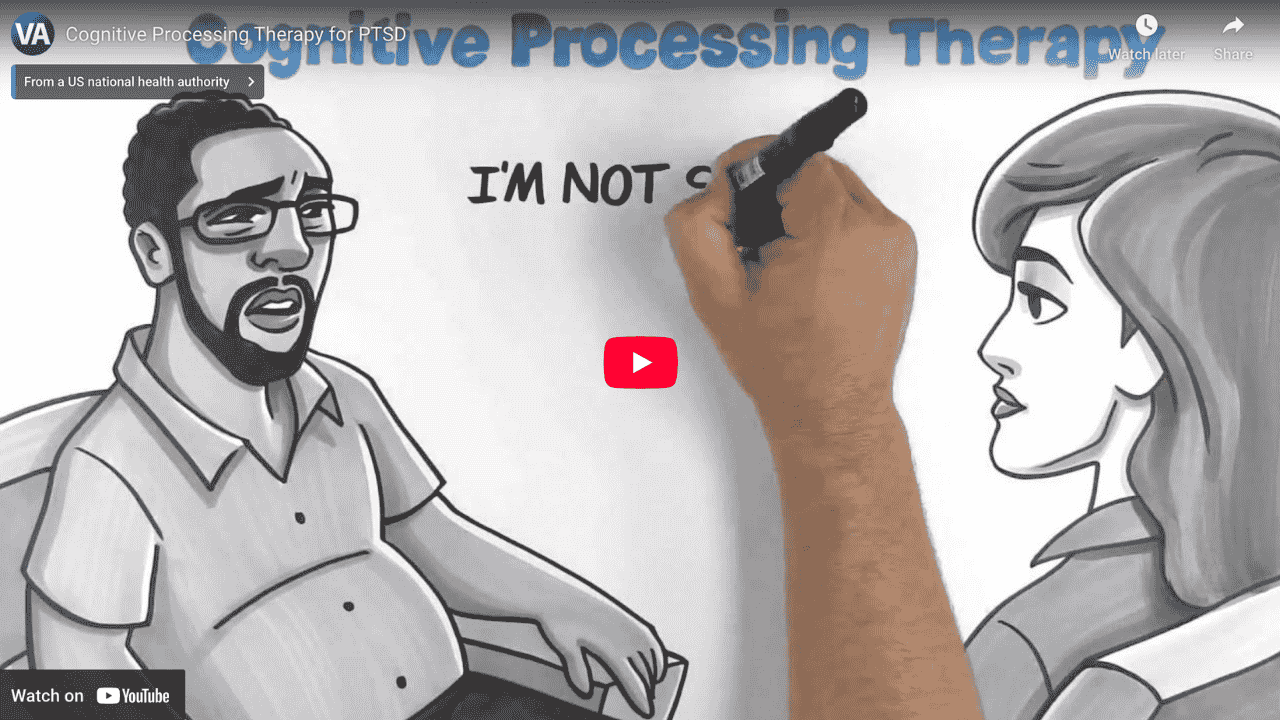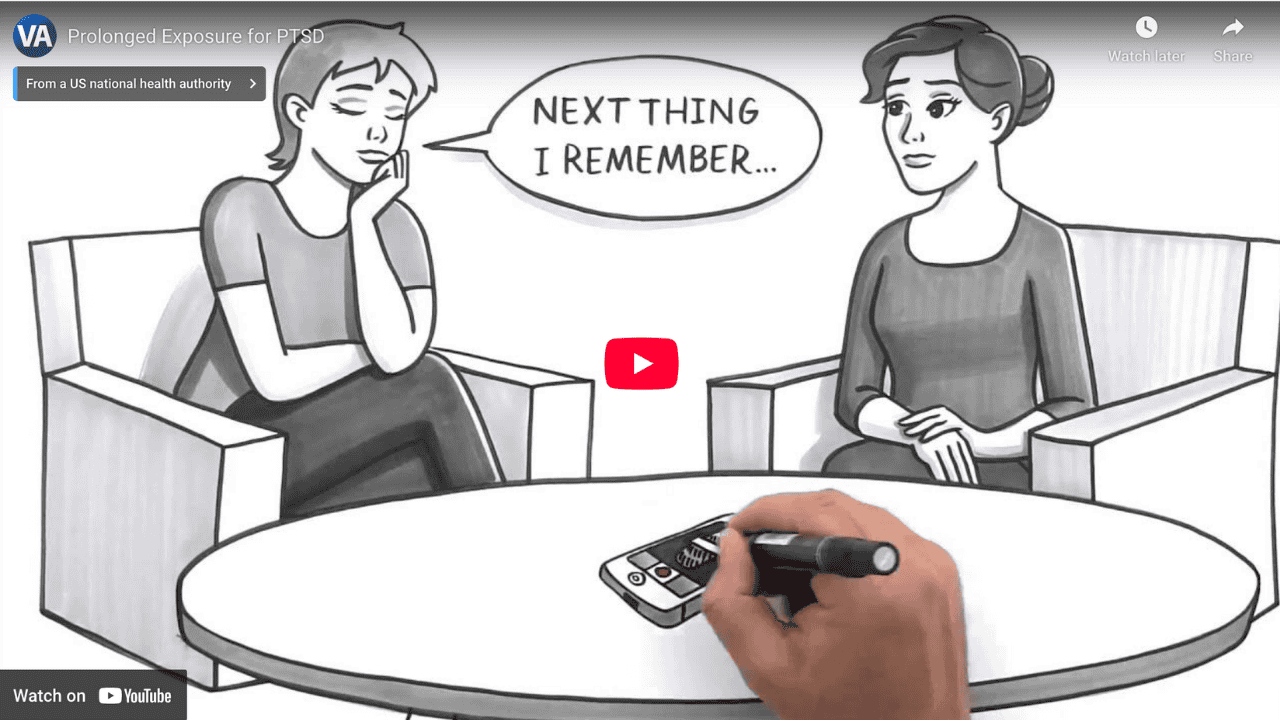CPT vs PE for PTSD: Which Therapy is Right for You?
Last updated October 23, 2025
Treatment for PTSD
Post-Traumatic Stress Disorder (PTSD) is a complex and debilitating condition. It affects millions of people worldwide. Fortunately, therapy has proven to be effective in treating PTSD. The US Department of Veterans Affairs (VA) and the American Psychological Association (APA) recommend several treatments for PTSD.
Two of these recommended therapies are:
Cognitive Processing Therapy (CPT)
Prolonged Exposure (PE)
Both CPT and PE aim to ease the distressing symptoms associated with PTSD. They employ distinct techniques and strategies. In this article, we'll discuss the differences and similarities between CPT and PE. It will help you better understand which approach might be the best fit for your needs.
If you live in Ontario, you can book a free consultation. Our Clinical Directors can match you with a trauma expert. We can help you choose between PE and CPT.
“Recovery from trauma is not about becoming who you were. It's about becoming who you are now—someone who has survived, learned, and grown.”
— Bessel van der Kolk, MD, author of The Body Keeps the Score (2014)
What is CPT in PTSD Treatment?
CPT is a type of cognitive-behavioural therapy (CBT). CPT helps to address unhelpful thoughts and beliefs that emanate from traumatic experiences. The therapy involves identifying and challenging these negative thoughts. People develop more balanced and adaptive ways of thinking.
Key Treatment Approaches in CPT
CPT consists of structured sessions where people work with a trained therapist to:
Analyze and challenge unhelpful beliefs.
Reevaluate the meaning of traumatic memories by discussing what happened with your therapist.
Develop a new story around the traumatic memory.
Learning how to do a “Challenging Belief Worksheet” (CBW). The CBW is a helfpul tool to help you understand the meaning of what happened. The CBW will help you with other life situations as well.
Client Book for CPT
Getting Unstuck from PTSD: Using Cognitive Processing Therapy to Guide Your Recover (Resick et. al, 2023)
CPT App
Blog Posts on CPT
Understanding Trauma Stuck Points
CPT Resources
CPT Whiteboard Video Library and more
Find a CPT Therapist
Many of the therapists at Virtual CBT Psychotherapy are registered CPT providers. We also have several trained clinical supervisors. Book a free consultation to learn how CPT therapy can help. Learn more about our therapy fees and trauma therapists. *Must reside in Ontario.
What is Cognitive Processing Therapy for PTSD? (Source: VA)
What is PE in PTSD Treatment?
PE is another evidence-based therapy for treating PTSD. Unlike CPT, PE focuses on confronting avoided situations and memories associated with trauma. PE involves gradually facing these distressing triggers (in a safe way) which reduces the fear and anxiety attached to them.
Key Treatment Components of PE
Imaginal Exposure: People revisit and retell the traumatic memory in a controlled environment. PE helps to desensitize emotional reactions.
In Vivo Exposure: People confront avoided situations that trigger anxiety. By doing this, it helps you to regain a sense of control.
Discussing the meaning of the trauma with your therapist. This allows you to develop new meaning around what happened.
Client Book for PE
Reclaiming Your Life After a Traumatic Experience: A Prolonged Exposure Treatment Program - Workbook (Rothbaum et al., 2019)
PE Coach App
Find a PE Therapist
One of our Clinical Directors (Celissa Vipond, RSW, MSW) is a registered PE Therapist and a registered PE Consultant. We have a variety of trauma therapists trained in PE. Book a free consultation to learn how PE can help you overcome the aftermath of trauma. * Must reside in Ontario.
Similarities of CPT and PE Therapy
Both therapies are CBT-based.
The American Psychological Association recommends both therapies.
The U.S. Departments of Veterans Affairs and Defense, the International Society for Traumatic Stress Studies, and the U.K. National Institute for Health and Care Excellence (NICE) recommend both therapies.
Both therapies are evidence-based. This means that both have been well-researched and have proven to help reduce symptoms of PTSD.
Both therapies involve daily practice assignments.
Both approaches can be completed in 8-12 therapy sessions and 50-minute sessions.
Both CPT and PE therapy can be done in-person or online. Evidence supports both approaches.
Prolonged Exposure for PTSD (Source: VA)
Differences between CPT and PE Treatment
CPT will focus more on helping you change your thoughts by teaching you different worksheets.
In CPT, you won’t have to revisit your trauma memory in great detail.
PE is exposure-based and will help you to “process” or “digest” your trauma memory by revisiting it. PE will require you to have a clear memory of the trauma.
PE can be done in a 60 or 90-minute therapy session.
PE may require more time spent on out-of-session practice assignments.
Common Questions: CPT vs PE
1. Which therapy works better—CPT or PE?
Both CPT and PE work well for treating PTSD. Research shows they are equally effective. The best choice depends on your needs and preferences. CPT focuses more on changing unhelpful thoughts. PE focuses on slowly facing your fears and memories until they feel less painful.
2. Is one therapy harder than the other?
Both can feel challenging at times. CPT asks you to think deeply about how the trauma affected your beliefs. PE asks you to talk about the trauma and face situations you avoid. With the right support, people can do either successfully.
3. Can I do CPT or PE online?
Yes. Many therapists offer both CPT and PE through secure video sessions. Online therapy can be just as effective as in-person therapy when done with a trained provider.
4. How long does each therapy take?
Both CPT and PE usually last about 12 sessions. Some people need more sessions. And some people need fewer sessions. It will depend on how they respond and what they’re working through. It will also depend if they are doing out of session practice and attending each week.
5. What if I have more than one trauma?
Both therapies can help with many traumas. If your trauma is complex or happened over a long time your therapist can adjust the treatment to meet your needs.
Common Questions: CPT vs PE for Teens
1. Can teens do CPT or PE?
Yes. CPT and PE can work well for teens with PTSD. Therapists adjust the sessions to match your age, learning style, and comfort level. You don’t need to be an adult to start healing.
Meet our online teen therapists in Ontario.
2. Will I have to talk about everything that happened?
In CPT, you don’t have to go into all the details. You’ll talk more about how the trauma affected your thoughts. In PE, you will slowly talk through the memories. Your therapist will guide you step by step so you feel safe and in control.
3. What if I’m not ready to talk?
That’s okay. A good therapist will go at your pace. You’ll never be forced to share anything before you’re ready. Trust builds over time.
4. Will my parents be involved?
That depends on your age and what you’re comfortable with. Some teens like to have their parents involved a little. Others prefer privacy. You and your therapist can talk about what works best for you.
5. Will this help me feel normal again?
Healing doesn’t mean forgetting—it means you won’t feel stuck in the pain forever. CPT and PE can help you feel more like yourself again. You deserve to feel safe, strong, and hopeful.
Choosing the Right Trauma Treatment Approach
The choice between CPT and PE is a personal choice and depends on individual preferences. Some people may find CPT's focus on challenging beliefs more appealing. And others may resonate with the exposure-based approach of PE.
Both CPT and PE are effective therapies for treating PTSD. Each has its unique techniques and strengths. Understanding the differences and similarities between these approaches can empower you to make an informed decision. It will also help you choose a therapy that aligns best with your journey to recovery.
Remember, getting professional help can be an important first step toward healing.
Connect with a CPT or PE Therapist. For Ontario Residents Only.
It's important to consult with a mental health professional who can guide you in choosing the most suitable therapy. You may opt for a different approach as well, like EMDR or trauma-informed care. Discover the differences between trauma-informed care vs treatment, and EMDR vs CBT.
At Virtual CBT, we have a variety of trauma experts to choose from. Our Clinical Directors will meet with you for your free consult. Y
Learn more about our Expert PTSD and trauma therapists in Ontario. Book a free consultation with one of our trauma specialists by clicking the tab below.
Written by Celissa Vipond, RSW, MSW, a registered CPT and PE provider.




